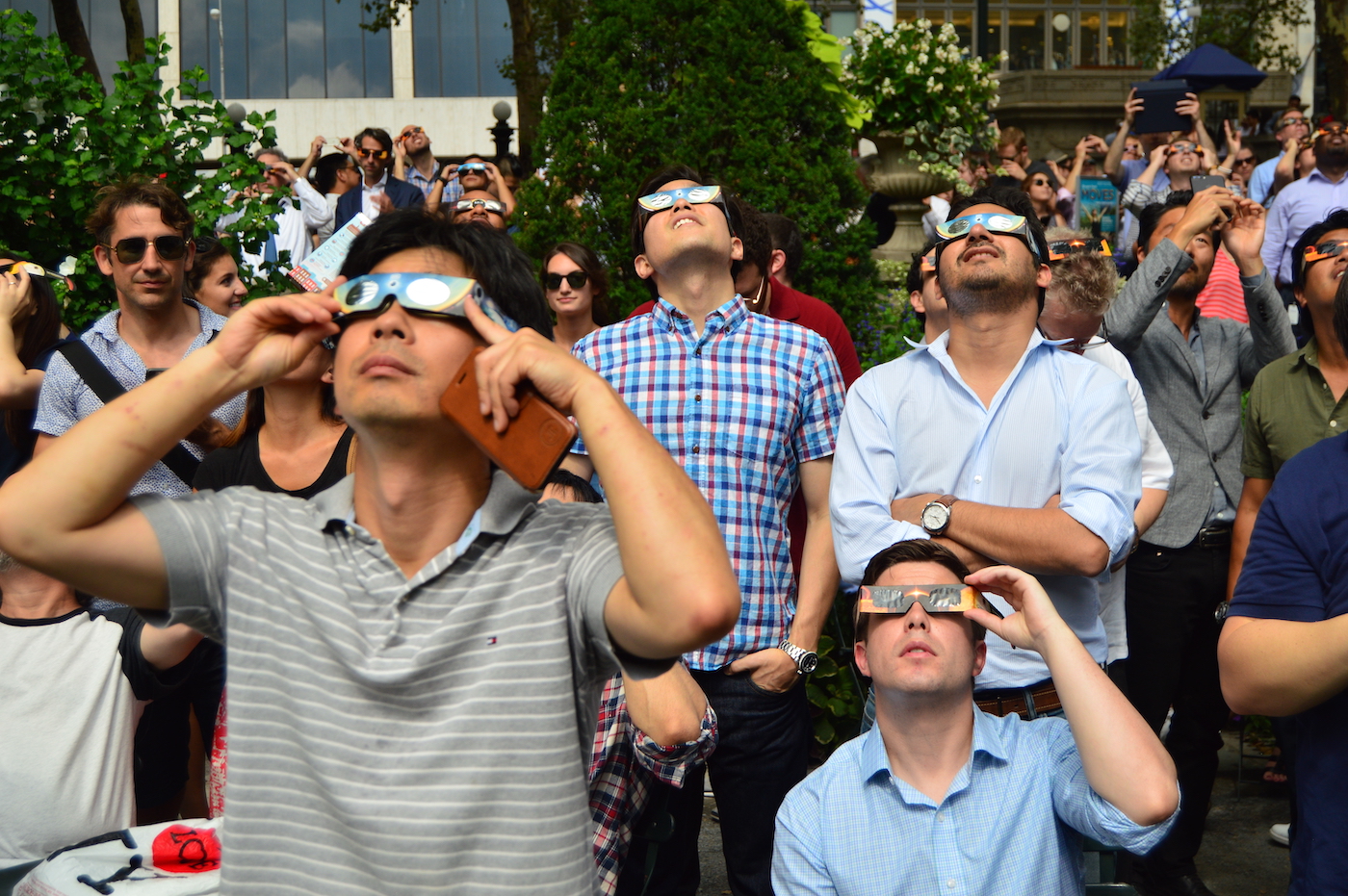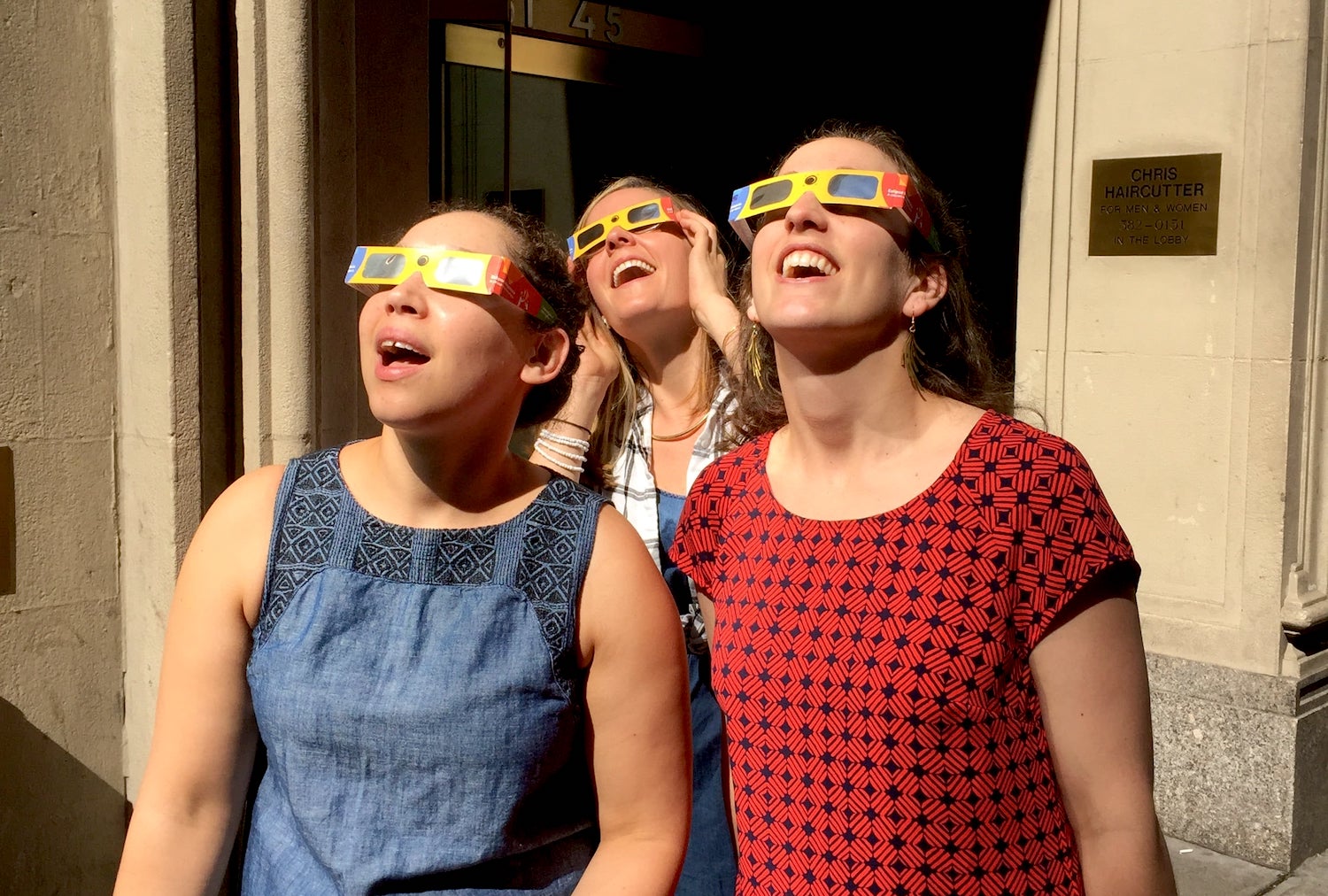What Did Seeing An Eclipse Do For America?
Research from the 2017 total eclipse looked at how the awe of a natural phenomenon brought people closer together.

For Naveen Ravindar, a mechanical engineering master’s student at Stanford University and eclipse chaser, experiencing an eclipse is something of a rush. “It’s the sense of awe, amazement, just [a] humbling feeling when you see this happen,” Ravindar says. “No matter how much somebody will tell you about it, it’s not hyped up enough.”
The feeling of humility and amazement is common in anecdotes, but for the 2017 eclipse, scientists actually quantified some of the event’s effects on humans. NASA partnered with science literacy researchers from the University of Michigan to understand how people learned about and reacted to the eclipse.

They found that the eclipse was a point of human connection: When people looked for information about it — even after the fact — they tended to do so by talking to their friends and family more than by searching online. And survey respondents described the event as “enjoyable” even a bit more than “educational,” showing it to be a genuinely fun learning experience.
There’s also evidence from social media that the awe inspired by a natural event like an eclipse may help orient people toward each other. In a 2017 study analyzing tweets from over 2.8 million Twitter users, researchers found that people inside the path of totality used language that was more humble, collective, and “prosocial” (promoting social bonds) in the few days surrounding the eclipse than those residing outside the path. And people who expressed awe surrounding the eclipse exhibited the same prosocial changes in their language on Twitter in the six weeks after the eclipse, relative to the six weeks before it. The findings, the researchers wrote, shed light on how celestial phenomena can promote social cohesion.
“I don’t think I’ve ever watched an eclipse alone,” Ravindar says. To him, watching with a group intensifies the experience, because different people end up catching different sights, sounds, smells, and emotions. “You’ll notice more, you’ll see more, and you’ll experience more,” he says.
Ravindar’s plan for April includes capturing a photo of the eclipse with his and his dad’s silhouettes together against the sky. “Having a picture, a memory saying, ‘Hey, here’s where we were on this day, during this event, together,’ I think is really precious,” he says.
🌎 Am I in the path of the eclipse? Read NASA’s where and when guide.
🎯 Naveen Ravindar’s pro tip: The closer you are to the center of the eclipse’s path, the longer you will experience totality. Plan accordingly!
🥳 Eclipse party all day long! Read up on a few eclipse party activity ideas on Science Friday’s website.
😎 Did you remember your eclipse glasses? You can get them at a public library or by ordering safe solar viewers online.
This was an installment of our 2024 limited-run eclipse newsletter, “Moon Mail.” See the full “Moon Mail” archive here.
Emma Lee Gometz is Science Friday’s Digital Producer of Engagement. She writes SciFri’s “Science Goes To The Movies” series and is a journalist and illustrator based in Queens, NY.